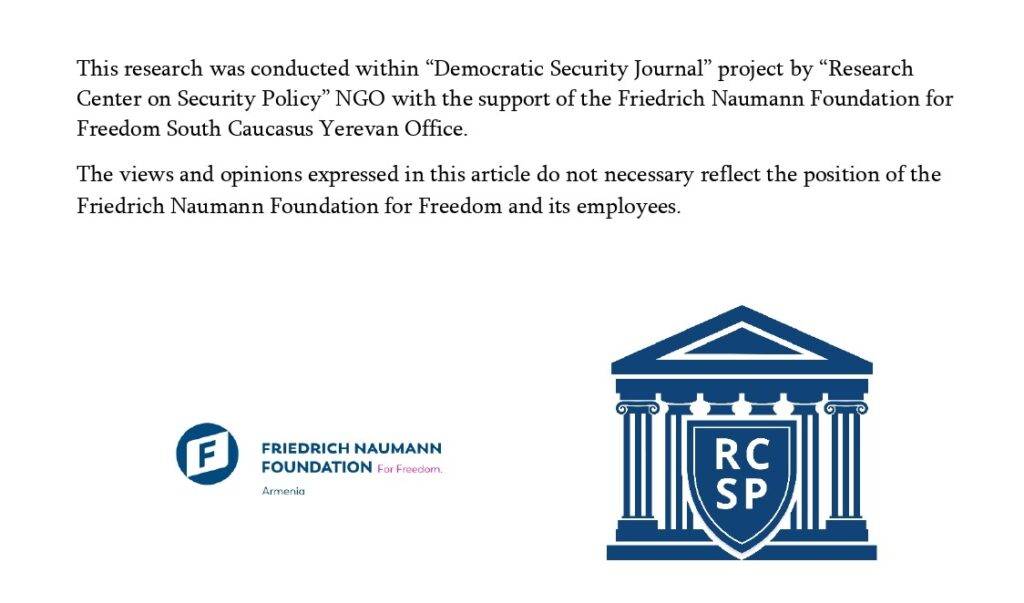Middle Corridor Gaining More Importance
The 2022 Ukrainian crisis and the escalation of Russia-West tensions have seriously impacted the logistics chains connecting Asia to Europe, particularly the “Northern Route” passing through Russia. The situation became more complicated with the Israeli-Palestinian escalation, which took on regional manifestations, leading, for example, to the obstruction of navigation by Yemen’s Houthis through the Bab el-Mandeb strait, through which 12% of global trade circulation passes.[1]The prospects for international freight transport through Iranian territory are also problematic, considering international sanctions and the restoration of the “maximum pressure” policy by the new US administration.[2]
Against the backdrop of these developments, the issue of a stable, accessible, and secure Eurasian transport corridor for energy carriers, logistics, and raw material flows has become more urgent than ever. In this context, discussions around the Middle Corridor have intensified.
The “Middle Corridor” is a fairly broad and generic term applied to an entire network of routes and logistics chains that connect China with Europe through Central Asia, the Caspian Sea, the South Caucasus, and then through the Black Sea or Türkiye.
Different countries and organizations have different interests, perceptions, and priorities regarding the corridor and its individual routes. The first concept for realizing the Middle Corridor’s potential was presented back in 2010 by Türkiye[3]. It envisioned integrating regional ports, airports, railways, highways, energy lines, and digital networks. The first practical step in this direction was initiated in 2013: Kazakhstan, Azerbaijan, and Georgia created a working group for organizing Trans-Caspian multimodal transportation, with Türkiye participating in this process as a strategic partner. Within the framework of the project, the Baku-Tbilisi-Kars railway was launched in 2017, and infrastructure development programs for Azerbaijani and Kazakhstani ports on the Caspian Sea were implemented.
In 2017, Azerbaijan, Georgia, and Kazakhstan also created the International Association of the Trans-Caspian International Transport Route, whose purpose is to coordinate all activities in the Middle Corridor, attract cargo and investment, advance railways in interested countries, and standardize logistics. Since the onset of the war in Ukraine, there has been a noticeable increase in cargo transit through the Trans-Caspian International Transport Route:[4]
| Year | Cargo Volume (million tons) | Number of Containers (TEU) |
| 2017 | 1.3 | 9,000 |
| 2018 | 1 | 15,200 |
| 2019 | 0.8 | 26,000 |
| 2020 | 0.8 | 21,000 |
| 2021 | 0.6 | 25,200 |
| 2022 | 1.5 | 33,600 |
| 2023 | 2.8 | 20,200 |
| 2024 | 3.3 | 56,500 |
Despite all this, today both organizational and infrastructural work are still needed to increase the speed of freight transport through the Middle Corridor, reduce costs, and harmonize procedures, which requires significant investment and technical support.
Against the backdrop of growing attention to the Middle Corridor, the increasing interest of international actors in Central Asia is also noteworthy. This region contains 7-8% of the world’s natural gas reserves[5], about 2% of oil[6], about 49% of uranium[7] [8], about 4% of gold[9], 40% of manganese, 3-4% of copper and zinc, and others.[10] For many actors, infrastructure development is also an opportunity to ensure greater access to these resources.
Clash of International Interests in the Middle Corridor
Different power centers have their own interests and priorities regarding the Middle Corridor, which often do not coincide, creating a certain competition. Each tries to push forward its own vision and initiatives.
In case of China, the Middle Corridor fits within the framework of the “One Belt, One Road” initiative launched in 2013. In 2022, due to problems with the Northern Corridor, China began to pay more attention to this direction. For the Chinese side, it was important to have an alternative land connection with Europe that would be uninterrupted and stable. To this end, Beijing, on one hand, began to increase its economic involvement in Central Asian countries (primarily Kazakhstan), becoming their main and primary economic partner, and on the other hand, engaged in various infrastructure projects, such as the Khorgos dry port in Kazakhstan, the China-Kyrgyzstan-Uzbekistan railway. The Chinese side is also active in the development of cargo terminals and logistics hubs in the Caspian Sea, aiming to improve the efficiency of multimodal transportation. Astana and Beijing are also discussing the prospects of building a new railway line, a third railway crossing point, and a container hub at Aktau port. The strengthening of Beijing’s positions in the South Caucasus is also evident through the establishment of strategic partnerships with Georgia and Azerbaijan. China is actively involved in the construction project of the deep-sea port of Anaklia on the Black Sea[11], and also shows interest in the development program of Baku’s Alat port.
China has a growing interest in the Middle Corridor, and despite infrastructural gaps, Beijing’s consistency and growing investments suggest that it is viewed as a long-term strategic direction for strengthening influence in Eurasia.
Against the backdrop of the war in Ukraine and the escalation of relations with Russia, the significance of the Middle Corridor has also significantly increased for the European Union. It has been included within the framework of the EU’s 300 billion euro “Global Gateway” initiative[12], which is an alternative to China’s “One Belt, One Road” initiative. It is important for the European Union to ensure stable, safe, and fast connection with Asia, as well as to deepen cooperation with Central Asian countries and gain access to their energy and raw material resources. Unlike China, the European Union, in addition to infrastructure, pays great attention to the harmonization of customs processes and the reduction of customs duties along the corridor.
The EU ensures its involvement through the financial instruments of the European Investment Bank and the European Bank for Reconstruction and Development, focusing not only on hard infrastructure but also on regulatory and technical standards. The European Union has promised to invest 10 billion euros to ensure sustainable transport communication in Central Asia.
It is characteristic that, as a continuation of the Trans-Caspian transport corridor, the European Union considers infrastructure development in the South Caucasus important as well. In this context, the opening of Armenia-Azerbaijan and Armenia-Türkiye borders is also considered important, which, according to the President of the European Commission, “will change the rules of the game in the region and bring Europe and Central Asia closer together than ever before.”[13]
Unlike China and the European Union, the US economic involvement in the region’s logistics and trade processes is limited, but Washington has quite clear strategic interests in this matter. These involve reducing Russian and Chinese influence, bypassing Iran, and strengthening the sovereignty of Central Asian countries through diversified infrastructure.
The US, through the G7 Partnership for Global Infrastructure and Investment, coordinates investments made by the private sector in regional states. Within this framework, emphasis is placed on building resilient supply chains and promoting energy independence.
As for Russia, Moscow views the Middle Corridor as an attempt by the Western and Turkic worlds to isolate Russia. For this very reason, the Russian side is interested in either obstructing or, at least, having control over individual routes operating within the framework of this corridor. At the same time, after the war in Ukraine, Moscow is taking practical steps toward developing the North-South corridor to ensure uninterrupted connection with Iran and India.
The Role of the South Caucasus
The South Caucasus region also plays an important role in the effective functioning of the Middle Corridor and communications connecting Asia to Europe. For more than 20 years, the blockade and isolation policy implemented by Azerbaijan and Türkiye against Armenia has created an unfavorable situation for the Armenian side in the region. Since 2002, Azerbaijan has initiated a series of infrastructure projects (Baku-Tbilisi-Ceyhan oil pipeline, Baku-Tbilisi-Supsa oil pipeline, Baku-Tbilisi-Kars railway, Trans-Anatolian gas pipeline, and others) that bypass Armenia. These projects have significantly strengthened the role of Azerbaijan and Georgia, creating opportunities for them to realize their logistics and transit potential.
It is noteworthy that in recent years, Azerbaijan has quite consistently deepened relations with Central Asian countries and already has strategic relations with all of them. The Azerbaijani side quite effectively tries to use the factor of its geographical position in relations with all interested stakeholders interested in the Middle Corridor. Moreover, official Baku continues its actions within the logic of bypassing Armenia and continues to consider new regional infrastructure projects through Georgian territory.
The Armenian side has been deprived of the opportunity to realize its transit potential during these years. The “North-South” road corridor program, which began in 2009 and was scheduled to be completed in 2017, has essentially failed as a result of corruption abuses and ineffective management.[14] With a series of corrections, the program has been reloaded today and continues. It is characteristic that in 2021, the European Union was also involved in the financing process of the corridor’s unbuilt sections, including it in its “Global Gateway” initiative.
The Armenian side is also interested in the unblocking of regional communications and is advancing the “Crossroads of Peace” project, which can be considered as a component of the Middle Corridor. It envisions the unblocking of all transport routes (railway, automobile, air, as well as energy and communication lines) between all countries of the region with unconditional recognition of states’ sovereignty, jurisdiction, and territorial integrity. In this context, the Azerbaijani side is advancing the idea of the so-called “Zangezur Corridor,” which involves providing an extraterritorial corridor south of Syunik province, which is naturally unacceptable for Yerevan. It is also noteworthy that the Azerbaijani side, distorting facts, tries to present the Armenian side’s position in various international platforms as an obstacle to the development of the Middle Corridor.
An interesting picture has also formed in the relations between the key actors interested in the Middle Corridor project and the South Caucasus. The only country in the region that currently has a strategic partnership with the US is Armenia. Washington suspended its strategic partnership with Georgia in 2024 due to that country’s domestic political processes. Regarding cooperation with the European Union, although Georgia has EU membership candidate status, membership negotiations have been frozen, and Tbilisi-Brussels relations are, to put it mildly, not experiencing their best period. Armenia-European Union relations are developing quite consistently, and the signing of a new document is expected in the near future, which will update the Comprehensive and Enhanced Partnership Agreement operating between the parties, expanding bilateral cooperation. Azerbaijan-European Union relations are mainly based on economic, particularly energy agenda, while negotiations on a new legal basis for relations have been stalled for a long time.
China is also developing cooperation with the countries of the region. In 2024, Beijing signed strategic partnership declarations with both Georgia and Azerbaijan. In April 2025, cooperation with Baku deepened further with the adoption of a joint declaration on Comprehensive Strategic Partnership.[15] The only country in the South Caucasus that does not have strategic relations with China is Armenia.
Conclusion
Considering the uncertainty of prospects for resolving the Russian-Ukrainian conflict, the resolution of problems related to the Northern Route is unlikely in the short term. Given also the growing interest in Central Asian resources and increasing investments by various actors, international attention to the Middle Corridor will continue to grow in the coming years. Moreover, the development of various routes and infrastructure within the corridor will require more financial resources, as well as technical and political support. All this will inevitably increase competition between different actors to advance their own interests and strengthen influence, which can create both challenges and opportunities for the countries of our region.
Narek Minasyan
[1] https://www.reuters.com/world/bab-al-mandab-shipping-lane-target-israel-fights-hamas-2023-12-12/
[2] https://www.whitehouse.gov/fact-sheets/2025/02/fact-sheet-president-donald-j-trump-restores-maximum-pressure-on-iran/
[3] https://middlecorridor.com/en/
[4] https://middlecorridor.com/en/
[5] file:///C:/Users/Editor/Downloads/Statistical%20Review%20of%20World%20Energy.pdf
[6] https://www.usgs.gov/centers/central-energy-resources-science-center/science/world-oil-and-gas-resource-assessments?page=8&utm_source=chatgpt.com
[7] https://world-nuclear.org/information-library/country-profiles/countries-g-n/kazakhstan?utm_source=chatgpt.com
[8] https://d9-wret.s3.us-west-2.amazonaws.com/assets/palladium/production/s3fs-public/media/files/myb3-2022-uzbekistan.pdf?utm_source=chatgpt.com
[9] https://pubs.usgs.gov/periodicals/mcs2023/mcs2023.pdf
[10] https://kun.uz/en/news/2025/04/10/from-forgotten-to-frontline-does-central-asia-really-matter-now
[11] https://chinaobservers.eu/impact-of-chinese-investment-in-anaklia-strategic-implications-for-georgia-and-europe/
[12] https://eur-lex.europa.eu/legal-content/EN/TXT/?uri=CELEX%3A52021JC0030
[13] https://ec.europa.eu/commission/presscorner/detail/en/SPEECH_25_976
[14] https://factor.am/397502.html
[15] https://jam-news.net/ru/%D0%BD%D0%BE%D0%B2%D1%8B%D0%B9-%D1%8D%D1%82%D0%B0%D0%BF-%D0%B2-%D0%BE%D1%82%D0%BD%D0%BE%D1%88%D0%B5%D0%BD%D0%B8%D1%8F%D1%85-%D0%BC%D0%B5%D0%B6%D0%B4%D1%83-%D0%BA%D0%B8%D1%82%D0%B0%D0%B5%D0%BC-%D0%B8/


